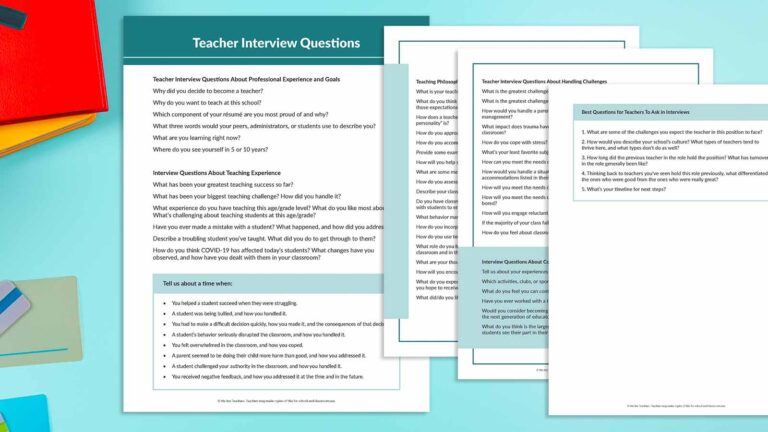I write a lot about teachers and teaching. This is motivated by two things: One, I’m passionate about education, and two, I’m worried about education. Lately I’ve been writing a lot more about the latter.
Here’s what’s happening:
Good teachers are leaving.
States won’t address the reasons why teachers are leaving.
Good teachers are being replaced by inexperienced and/or underqualified teachers.
And (eventually) our children will be taught by these teachers.
We should all be very, very worried about this. In fact, I wanted to make the title of this article “Nine Things Teachers Need if We Don’t Want a Dystopian Future in Which America’s Children Are a Pack of Raging, Illiterate Wildlings,” but my editor said it was too long.
This is what teachers need if we want to save public education.
Featured image credit: @hekter23 on Instagram
1. A living wage and competitive health care.
Since so few people are willing to teach under the current conditions, every state in the US is currently experiencing a teacher shortage. States are responding to these shortages not by improving conditions for teachers but often by lowering the qualifications to become a teacher. I don’t know how I can say this any more clearly: We will no longer have talented teachers if we do not take steps to make teaching an attractive profession. Period.
Read “How Close Are Teachers to Receiving Poverty Benefits?”
2. Smaller class sizes.
In addition to challenges with discipline, behavior, and building relationships, large classes force teachers to deliver less effective instruction. A student in a class of 35 will not receive the same quality of education as a student in a class of 20. However, it’s important to know that smaller class sizes cannot be a solution in itself. If we don’t take steps to make teaching an attractive profession, the educators coming in to teach those small classes won’t have the experience they need.
[contextly_auto_sidebar]
3. Shared accountability with parents and students.
In the past several decades, what used to be a shared accountability between teachers, parents, and students has now shifted—largely thanks to education reform based on the whims of legislators instead of actual research—to an expectation that the teacher alone should deliver results. Borrowing wording from professor Jason Read, teachers have become “the solution, scapegoat, and sacrificial lamb rolled into one.”
I’m not suggesting we head back to a time when teachers were the unquestionable authority. I’m saying that we can’t do this alone. We need parents to support us in and out of the classroom by following up with homework, discipline, and in modeling—especially in their conversations at home about school and teachers—that education matters.
4. Support and respect from the public.
There’s an old proverb I teach to my students every year: “A society grows great when old men plant trees whose shade they know they shall never sit in.” In the same way, we will only fix the problems in education if people decide to do what’s right for education, even if:
- They no longer have (or never had) kids in public schools.
- They feel they aren’t connected to education (they are, but that’s another article).
- For some reason they harbor a bizarre, decades-long resentment of teachers and troll Facebook posts about education with their misspelled outrage.
5. Lawmakers who treat education as seriously as security.
Because in so many ways, education IS security. A country that cannot think is just as dangerous as a country that cannot defend itself.
6. For people in education reform to actually listen to teachers.
Longer recess. More arts education. Play-based learning. All of these are better for kids and their academic and developmental growth. We know this from research. And yet those in positions of power continue to impose limits on them or cut them completely.
7. Highly qualified administrators.
A school is only as good as its leadership. I once transferred to a school in a new district that was pretty much identical to the school I was leaving—Title I middle school, identical population breakdowns, similar facilities and resources—but the experience was like night and day. What was the difference? The leaders in my new school were really, really good at their jobs. We have to demand that our administrators have more than two years of experience teaching(!) and a state license.
8. School facilities that reflect that the people within them actually matter.
School buildings are often outdated and full of hazards, including but not limited to: black mold, broken windows, entrances left unsecured, cracked tile and flooring, missing ceiling tiles, broken hand rails on stairs, classrooms designed for 20–25 students that house 35, plants growing out of the gutters on the roof, leaks bursting from paint bubbles in ceilings, etc. Note: This is a short, incomplete list.
Read: “Why Are Teachers and Kids Working in Buildings That Are Falling Apart?”
9. Counselors.
Mental health is a topic that’s been in the news a lot in the past couple of years, particularly as it relates to school shootings. But very few public schools have enough counselors to meet their students’ needs. In fact, the average ratio of counselors to students in schools is 1 to 471 (the recommended ratio is 1 to 250), and many states don’t even require that schools hire mental health professionals. The lack of access is even worse in high schools, where counselors have the added expectation of connecting students with college opportunities.
We’ve known that education has been in trouble for years, but the solution is simple: Listen to teachers. Listen to research. Elect people who do so.
We’d love to hear—what would you add to this list? Come and share in our WeAreTeachers HELPLINE group on Facebook.

